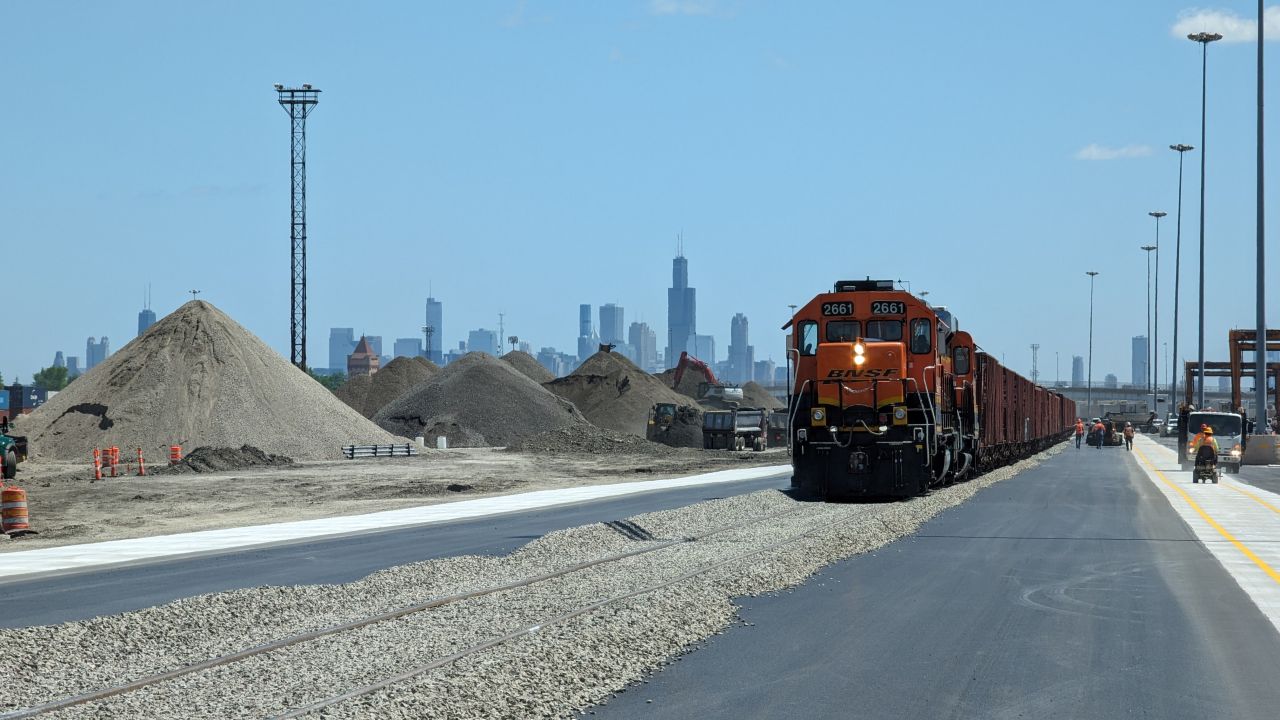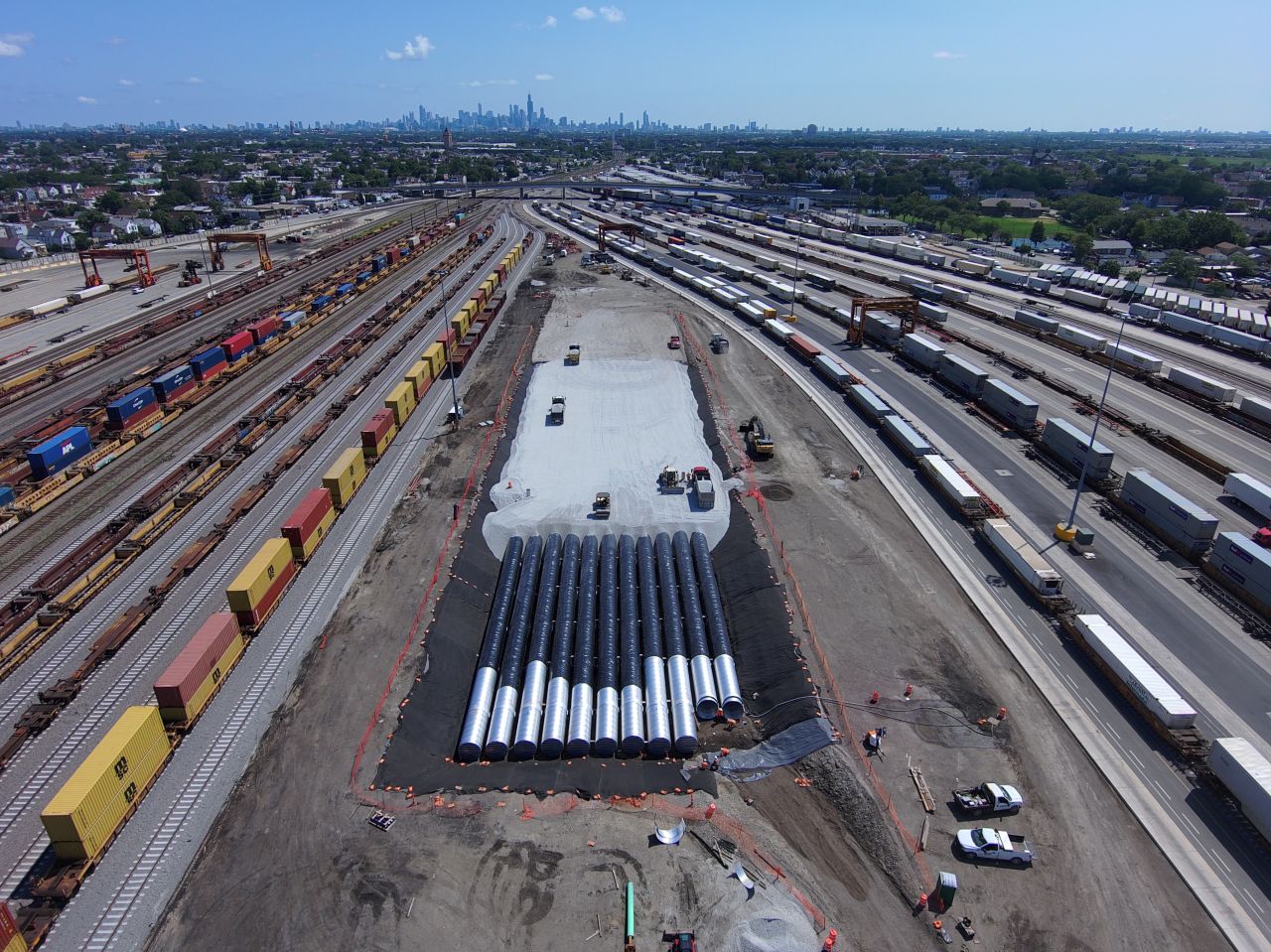
FORT WORTH, Texas — BNSF Railway has completed the second phase of its expansion project at its intermodal terminal in Cicero, Ill.
Last month, work was completed on a new 4,530-foot production track; the reconfiguration of 43,000 feet of receiving yard trackage; a new 100-foot-diameter turntable; 470 new parking spots; and a new hostler repair shop.
BNSF partnered with Railroading Heritage of Midwest America to donate the existing 135-foot turntable for restoration and re-use at their facility in Silvis, Ill. BNSF also donated an existing 15-ton crane from the Cicero Diesel Repair Shop to the Illinois Railway Museum, which will be used to service the museum’s 58 historic diesel locomotives.
Construction crews significantly reduced the excavation required for the expansion project by optimizing site grading, recycling existing pavement, and testing and repurposing excess soil on an adjacent BNSF site, reducing greenhouse gas emissions by 5,971 metric tons. The work also included construction of a stormwater detention system that controls stormwater runoff.
The overall project will be completed in 2026, BNSF says, and will increase production capacity to keep pace with growth.
Cicero primarily serves intermodal trains linking Chicago and the Pacific Northwest.















I guess they settled that storm water sewerage bill with the City of Cicero.
Article should say “stormwater Retention” not “detention”; perhaps that may be what is illustrated in that unusual structure at the center of the photo. It would be interesting to know what is then done; perhaps the stormwater is released into the city sewers at an acceptable rate over time. This implies a huge amount of drainage improvement throughout the yard, to gather and direct water to the retention system. I’m impressed.